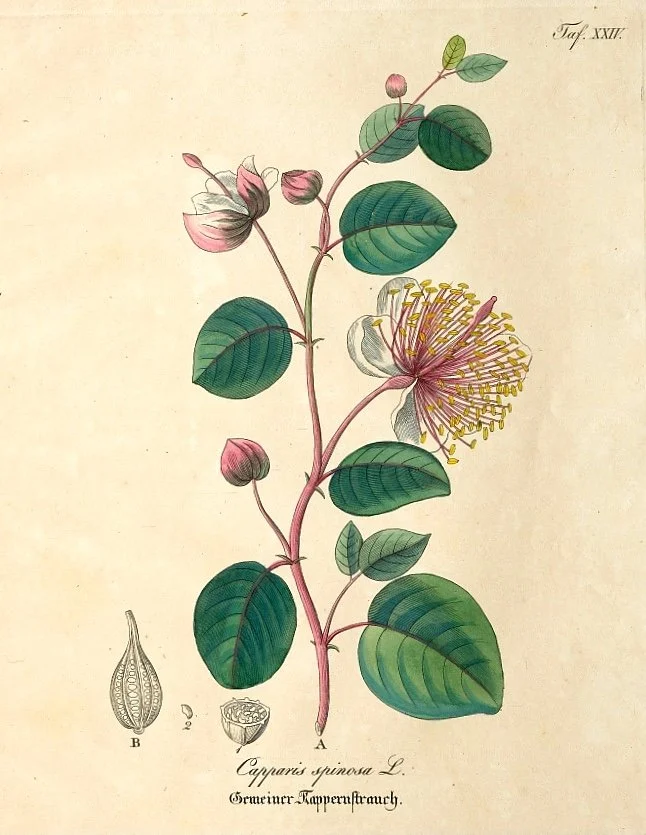Spineless Caper
Spineless Caper
SPINELESS CAPER SEEDS
Capparis spinosa var. inermis
The use of this species for food and medicine and ritual purposes is extraordinarily old. The caper bush is described in the earliest known Jewish texts and was very probably the material used for the crown of thorns, whether real or imagined, in the Christian gospels. These plants grow wild throughout the Levant and indeed much of the Mediterranean, even in the cracks of Roman ruins. Considered by some taxonomists to be an ancient hybrid cultigen, the true origin of this species is nearly impossible to ascertain. Most commonly cultivated for its unopened flower buds, which are preserved in brine or salt and are intrinsic to several Mediterranean cuisines. All parts of these plants are edible, if not entirely enticing. Occasionally the preserved young fruits can be found in specialty markets as “caper berries".
No crown of thorns may be fashioned from this variety of Caper bush, which is spineless. These small shrubs should be grown in containers in the north, where they may be brought indoors to overwinter. Though tolerant of extreme drought and poor soil, they cannot tolerate cold. Listed as hardy in zone 7, but this is very optimistic in most of the United States. These plants require very sharply drained soil to overwinter.
These seeds require stratification to germinate. Tuck seeds just beneath the surface of moist soil and press to keep seed snug. Cover with plastic to maintain moisture and place pot in the refrigerator for 4-6 weeks before returning to room temperature in bright light to germinate. Alternatively the potted seeds may be placed in a shaded and sheltered location outdoors in late winter. Seeds will germinate as the days warm in the spring. Germination can be erratic so be patient. Prick out seedlings to grow on in deep pots in bright light at warm room temperature. Water only infrequently and fertilize occasionally with dilute seaweed extract to encourage root development. Transplant into successively larger containers as necessary, and ultimately into a large terra cotta pot to be placed outdoors in hot full sun.
Left unattended these plants can grow to just over 2' in all directions and tend to sprawl prostrate. They may be pruned to shape and are suitable for espalier.
Charming and historic and fun for the curious and patient gardener. Flowers are lovely, but it is the buds of these flowers that are typically considered “capers". Do allow some of the buds to bloom rather than picking them all, for the young fruit may be pickled, too. This species belongs to the cruciferous family, which will be all too evident in the fragrance and flavor of these plants. Both the buds and young fruit must be soaked and rinsed repeatedly over the course of several days before preserving. There are many good recipes for pickling or fermenting capers online, although we favor a very salty pickle brine. Whichever method you choose please do not skimp on the salt, which is necessary to properly cure these little treasures. The salt can always be rinsed from the cured capers or fruit before eating them.
Packet contains at least 10 seeds.
